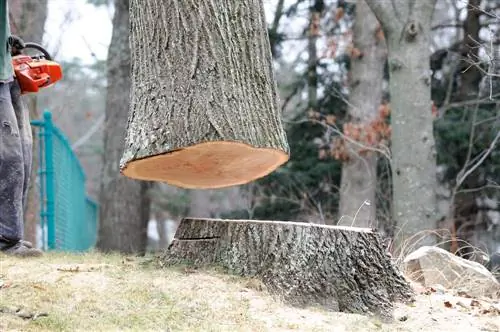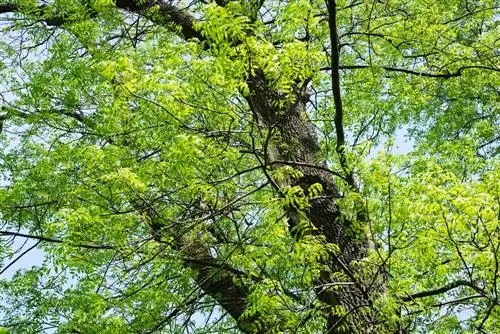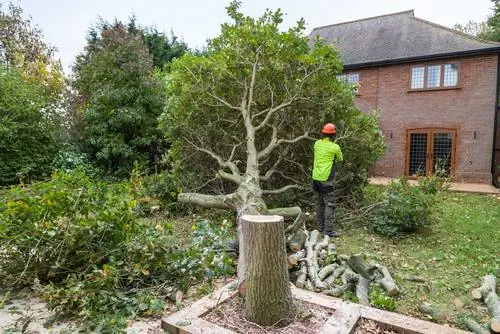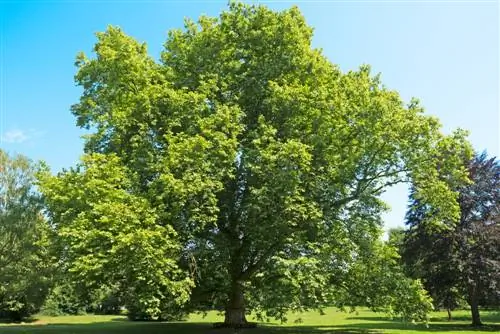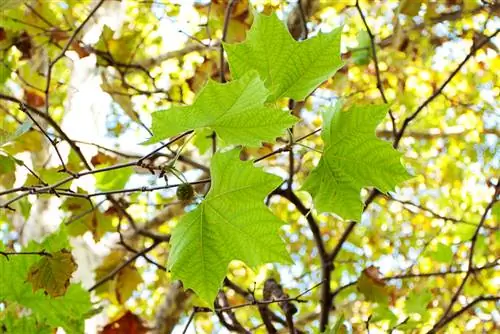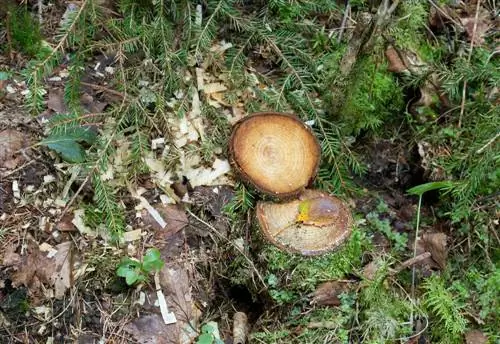- Author admin [email protected].
- Public 2023-12-16 16:46.
- Last modified 2025-06-01 06:02.
No matter how annoying the big tree is, once the trunk reaches a certain size and age, you can't easily cut down a deciduous or coniferous tree, even in your own garden. Especially in urban, densely built-up regions, old trees are under special protection, which is why you need good reasons and official permission to use the axe.
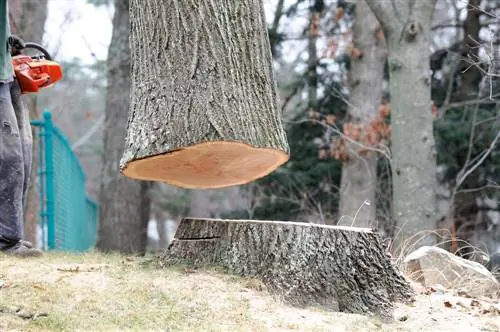
When do I need a permit to cut down a tree?
To fell a tree in your own garden, you need a permit if the trunk circumference is over 60 cm for deciduous trees and 80 cm for conifers. Felling is prohibited between March 1st and September 30th to protect breeding birds.
Legal regulations - when you are allowed to cut down trees and when not
In principle, trees may not be cut back heavily or even felled between March 1st and September 30th. This regulation is intended to protect breeding birds. In addition, in many municipalities, deciduous trees with a trunk circumference of around 60 centimeters and coniferous trees with a circumference of around 80 cm or more may only be felled if reasons are given and with official approval. Only fruit trees are exempt from this regulation. Reasons include, for example, a wood-destroying disease of the tree or because it is in danger of falling over anyway. However, the specific regulations differ in the individual federal states, often even from municipality to municipality. For this reason, you should always contact the relevant authorities before carrying out any planned felling work. As a rule, these are affiliated with the municipal administration.
Be careful with border trees: get permission from the co-owners first
Cutting down so-called border trees can be problematic because all owners must also give their consent. Boundary trees are trees that are located directly on the boundary between two (or more) properties or on a communal meadow and therefore have not just one, but several owners. You are not allowed to act on your own initiative here; instead, the neighbors in question must be questioned or a majority resolution must be obtained at an owners' meeting. This also applies if a specific user was previously granted a special right of use over the part of the garden with trees.
Observe the statutes of allotments and allotment gardens
Even if fruit trees are generally exempt from the permit requirement, pears, apples, etc. may not be felled without further ado, at least in an allotment. The association's statutes often regulate the relevant procedure, which is why garden leaseholders should first take a look at the regulations. By the way, walnut trees in this context are not fruit trees, but rather deciduous trees and are therefore also particularly protected.
The right season for tree felling
If all necessary permits have been obtained, the tree will ideally be felled between November and the end of January / beginning of February. At this time, the trunk carries less water, which is why the wood dries faster - anyone who wants to make firewood or process the wood in another way benefits from this. In addition, deciduous trees do not have any leaves at this time and the work can therefore be carried out more easily - not to mention that there are definitely no more bird eggs to be found in the nest.
Tip
Secretly felling the offending tree can have dire consequences: If someone rats you out or the public order office otherwise gets wind of it, you could face severe fines of up to EUR 100,000. The specific amount varies from municipality to municipality and can be checked in the relevant statutes.

